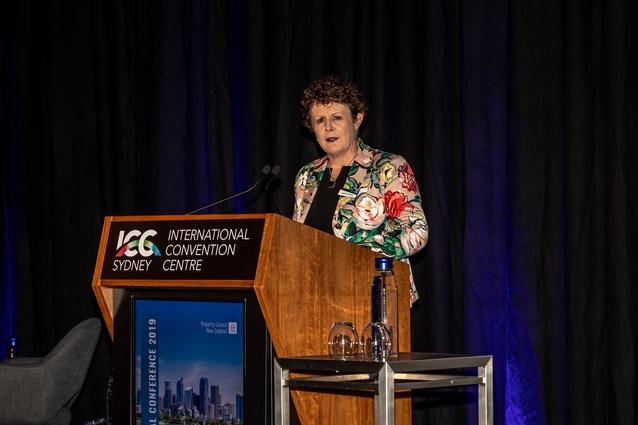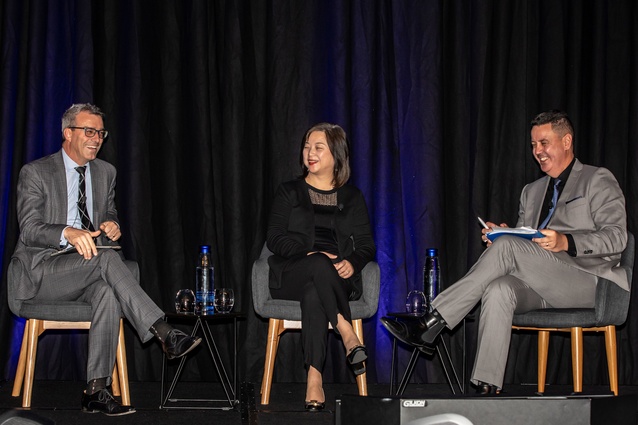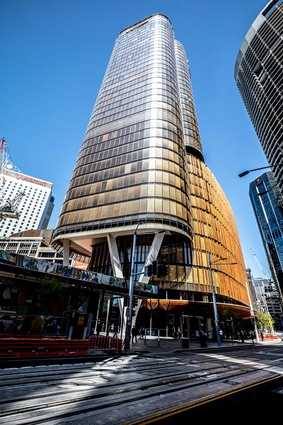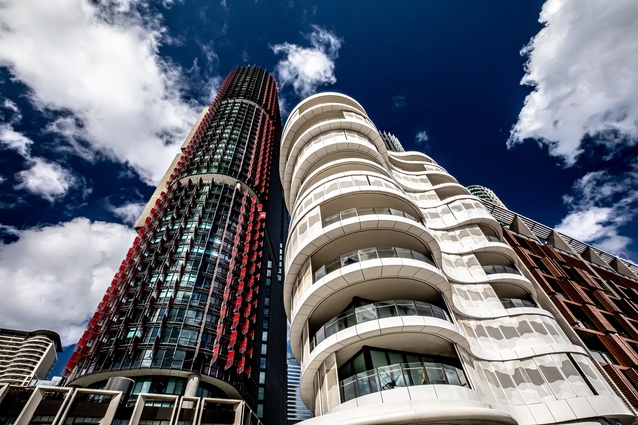New Zealand Property Council Conference 2019: Leadership and Legacy
Peddle Thorp’s Melodi Barzandeh, Jonathan Jordan and Tania West report from the New Zealand Property Council’s annual conference, held in Sydney this year. The conference is a three-day event that features talks, presentations and an architecture tour of select Sydney properties. Barzandeh, Jordan and West accompanied the Peddle Thorp senior leadership team to the event and they brought back with them highlights and key learnings.
Conference highlights
Green building was a recurrent theme of the conference. It was noted that in many cases, green buildings cost the same as non-green buildings, but there is a gap in tenants’ understanding of how to properly use the buildings.
Innovative team leadership was another key theme, with firms encouraged to invest in their organizational culture to encourage creativity to find solutions to clients’ problems, instead of purely valuing hours worked.
Duncan Young also reminded us that optimists live six and a half years longer, and that loneliness affects more and more people. He pointed to the interrelatedness of wellbeing and productivity, reminding us all that balance means going hard at work, and recovering well – especially getting enough sleep.
Perhaps the most motivational talk was by Liam Malone, the former New Zealand para-athlete who won two gold medals and one silver medal at the 2016 Summer Paralympics in Rio de Janeiro. The double-amputee, who was born with fibular hemimelia and who runs with two blades, reminded us that hard work and “getting it done” required a focus on one thing. He also reminded us to celebrate our successes, rather than simply moving immediately to the next challenge.
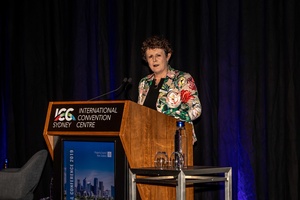
Day two of the conference began with a presentation by Property Council New Zealand Chief Executive Officer Leonie Freeman, who outlined her current activities, vision and goals for the Property Council and the industry it represents.
She called for participants to champion the property industry through three key themes: strengthening relationships within the wider industry; leading and collaborating on major projects; and, promoting diversity and inclusion.
Leonie described the Council’s position as an advocate for the sector—one that showcases the property industry’s contribution to the community and the New Zealand economy.
As a membership organisation, she outlined how the Council acts to develop engagement between members and her goals to expand members services, attract and retain top talent, and to engage members as sources of “feedback, expertise and promotion”. She noted that this year alone, her team has seen a 127 per cent increase in its social media traffic.
Leonie also emphasised the need to bring diversity and inclusion fully into the property industry – allowing people to bring their “full selves” to work. Developing inclusive workplaces requires work, however, she emphasised that while diversity is a fact, inclusion is an act. It was also noted that diversity encompasses more than gender diversity, and includes diversity of ethnicity, age and life experience.
Following Leonie’s presentation, Sir John Key discussed his analysis of the current state of the property market. He commented that in the residential market, he understands that people are moving from renting to buying with the introduction of lower interest rates.
In the commercial property sector, he noted how digital disruption is changing shopping patterns. With more shoppers moving online, shopping in stores will become more about entertainment – what stores can offer to move people away from their computer screens.
Key also noted that in his opinion, governments should fund debt to build infrastructure, and cited the Waterview Tunnel as a successful example this.
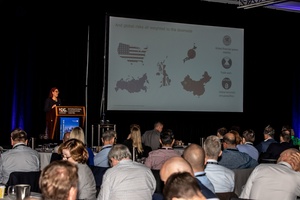
Deloitte Access Economics Partner Nicki Hutley described how current forecasts for GDP show a continuing slowdown through 2020 for advanced countries. She spoke about the massive increases in trade restrictions in the last two years and the slowdown in international trade volumes. She predicts that growth and inflation will remain low and slow for some time yet.
She also noted that with falling interest rates and cash rates, asset prices are likely to rise without solving underlying economic issues. Housing affordability in New Zealand and Australia, for instance, remains a huge challenge and one in which New Zealand holds a dubious leading role.
In terms of future lifestyles, in her opinion, people will still want face-to-face interactions even with the use of new technologies. There is an opportunity for the property industry to create environments that promote and foster social interaction to help alleviate the increase in loneliness in developed countries.
Infrastructure investment in the Asia Pacific region
Besides the keynote introductory speakers, a standout talk at the conference was the discussion on infrastructure investment in the Asia Pacific region.
Featuring Australian Business Solutions Group Head of International Business Sara Cheng and DLA Piper Partner Owen Hayford, with facilitation by Conference Master of Ceremonies Ward Kamo, the discussion covered infrastructure demand and foreign investment.
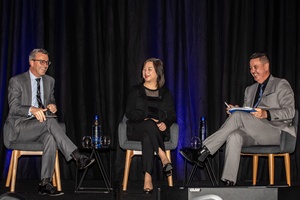
The speakers noted the huge gap between demand for infrastructure and capital available and suggested that foreign investment may the answer for infrastructure in our region.
As a major investor, China currently encourages investment in farmland, and restricts it for property, sports or entertainment. Chinese companies are issued guidance on foreign policy from their Government, and, over time, these investment advisories have changed direction and strategy.
So, where do governments obtain funding for infrastructure? One strategy is to sell existing infrastructure to the private sector and turn the capital back into new infrastructure. Another option is user charges, for example, for water use. One challenge with this model is that people generally do not wish to pay for things that were previously free.
The speakers concluded that infrastructure is never a small investment and needs to be a sensible commercial decision.
Site tour
For many of us, the highlight of the conference was a walking tour to the EY Centre, 200 George Street, and the new financial services precinct known as Barangaroo.
The EY Centre
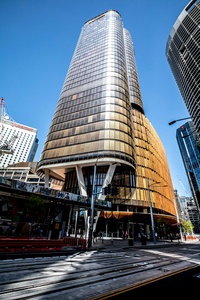
A stand-out skyscraper on the Sydney skyline, the 37-storey EY tower is a monument to history and timber that “glows” gold in the sunshine, offering a striking contrast to the grey and white skyscrapers that surround it. It has quickly become an iconic part of the Sydney skyline.
Design studio FJMT, which also designed the Auckland Art Gallery refurbishment, won a competition to design the building. Its architects wanted to create a building that was typically Sydney and that would make good use of its tight footprint.
What makes the EY building glow are timber blinds that are responsive to sunlight and cloud cover. These blinds move automatically to ensure internal temperatures stay close to constant, but can be overridden to reveal the harbour and city views. They also create a kinetic artwork for those looking at the building from the outside.
The blinds sit in a cavity between double-glazed glass in the inside and a single-glazed glass “skin” on the outside. This sealed, pressurized system – a first on this scale for Australia – was prototyped and tested for two years before being used to ensure it could prevent dust build-up on the blinds and would be safe for the timber, despite reaching extremely high temperatures in the summer.
The architects behind the EY Centre considered other green initiatives and decided on the blinds as they are a visible demonstration of sustainability.
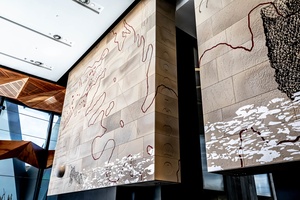
Inside the building, history comes to life. The reclaimed-wood soffits are reminiscent of gum trees that were originally found on the Sydney seashore. The building rises from the sandstone of the old shoreline; the sandstone was quarried and blocked and used to clad the core of the new building, which, unlike most skyscrapers, is featured at the south-eastern corner of the site, rather than in the centre.
The sandstone is decorated by local Aboriginal artist Judy Watson with images of ancient maps and artefacts. Aboriginal memorabilia and artefacts in window boxes – “windows to the past”– tell a story that respects what was there before.
The building encourages public connectivity, with a public café that uses all profits to support the YWCA NSW, which offers services for women and children experiencing domestic violence. The building also features a wall farm, with herbs that can be used by occupants, and indoor seating areas for casual meetings.
The Barangaroo Precinct
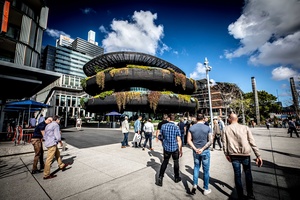
The Barangaroo financial services precinct is a lively new development that is the first large-scale, 100 per cent carbon-neutral urban area in Australia. On completion, it will house 23,000 office workers, 2,000 residents, a hotel, plus 80 cafés, bars and retail outlets.
Previously port land used to store cars, the precinct has transformed the industrial area into a vibrant hub that is connected to the city through public transport, including a new ferry terminal.
The core of the development comprises three identical, large commercial towers, all with 6 Green Star ratings from the Green Building Council of Australia. The buildings are designed in a fan shape, allowing multiple vistas and access-ways to the water’s edge.
Other buildings, including restaurants and low-rise apartment buildings, have been designed by different architectural firms – a decision that was made purposefully to bring diversity of ideas and designs to the area.
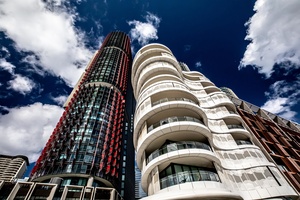
The architects have designed Barangaroo with walkability, accessibility and sustainability as their core areas of focus. As we walked around Barangaroo, we were impressed by how effortlessly the area has blended in with Sydney’s CBD and how the area is already buzzing while still under construction.
Peddle Thorp has envisaged a similar mixed-used development for Auckland’s Bledisloe Wharf, where the current over-sized port carpark could be transformed into a vibrant extension of the CBD with a sunken waterfront stadium as its centrepiece; like Barangaroo, the land would remain in public ownership.
Sustainability is a key feature of the Barangaroo development. It was designed for low-energy use, and all energy used on site is off-set. Barangaroo recycles and exports more water to the city than the drinking water it imports, and it employs responsible waste management practices, including routine diversion of waste from landfill. Its 6,000 solar cells power all public lighting, its water treatment plant, and other basic requirements.
The New Zealand Property Council National Conference 2019 took place on 25-27 September at The International Convention Centre Sydney (ICC Sydney) in Sydney, Australia.


